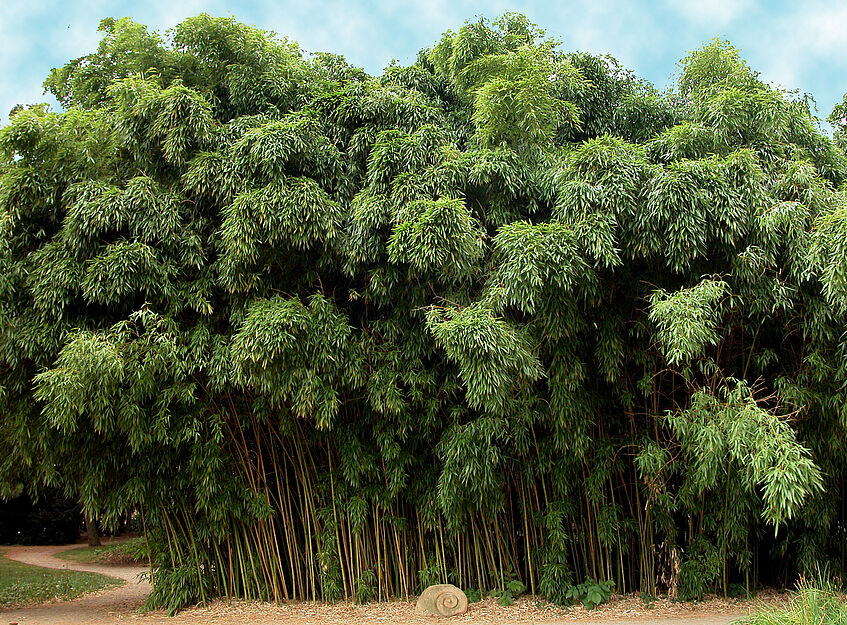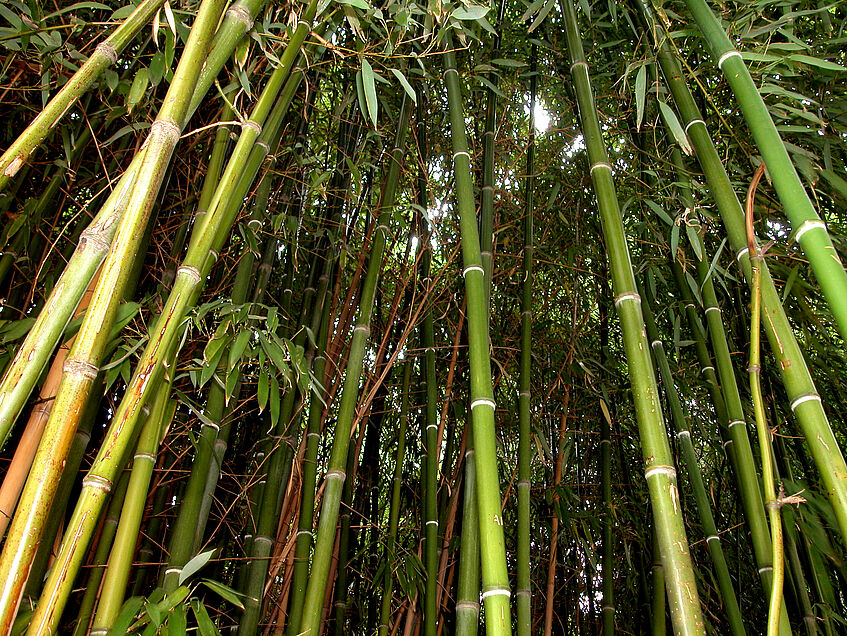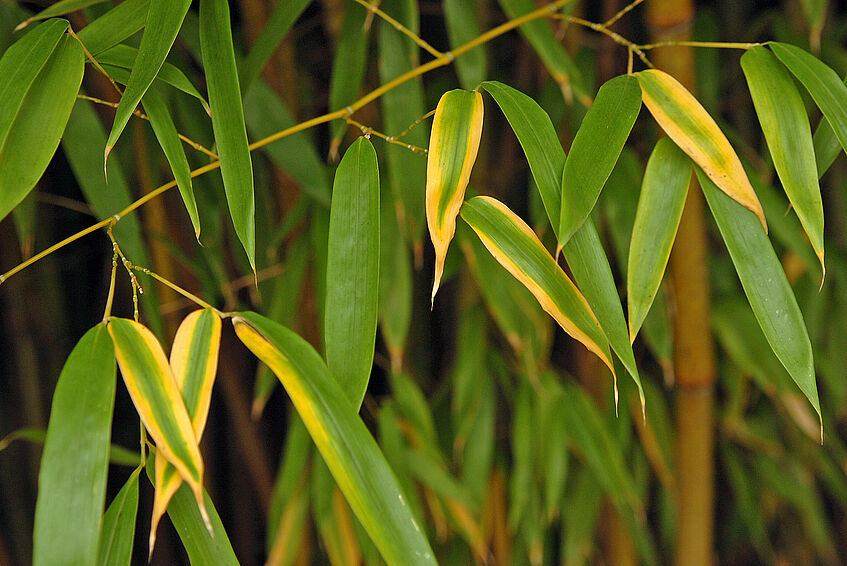Bamboo Grove
Phyllostachys viridiglaucescens – Greenwax golden bamboo

Phyllostachys viridiglaucescens © BGUW_R. Hromniak

Phyllostachys viridiglaucescens © BGUW_R. Hromniak

Phyllostachys viridiglaucescens © BGUW_R. Hromniak

Phyllostachys viridiglaucescens © BGUW_R. Hromniak
Phyllostachys viridiglaucescens – Greenwax golden bamboo
Location in the garden: area 20
The so-called "bamboos" comprise the whole subfamily Bambusoideae of the grass family (Poaceae). They are, i.a., characterized by their woody stems. Phyllostachys is one of the bamboo-genera with the largest number of species, and its hardy representatives are also among the tallest physically. Given time, the rhizomes can spread into impressive thickets. The stems have many uses, and young shoots of many Phyllostachys species are edible. The stand of P. viridiglaucescens has been grown in the Botanical Garden of the University Vienna since at least 1893 and today covers 300 m2.
The genus Phyllostachys consists of about 75 species originating from temperate China (from Beijing south to the provinces Zhejiang, Anhui and Hubei). In ancient times, many varieties were already being imported into Japan for ornamental and economic purposes. In the last 150 years Phyllostachys species have also been arriving in Europe and North America. In their natural habitat they often grow taller than 5 m; P. edulis can reach up to 25 m in height. In gardens outside Asia however, representatives usually remain significantly shorter. In mature plants new shoots reach their maximum height within one year; subsequent growth only results in additional branching of the shoot axis.
Essential distinguishing features between species besides different growth heights include the thickness of the shoot axis, the stem surface (mostly smooth, but also coarse or ribbed), and the shoot color (often dark green but sometimes yellow or rarely black; also speckled brown or striated yellow or cream).
Utilization of Phyllostachys in Europe is mostly restricted to ornamental purposes, but in Asia many species also have economically important uses. The stems of P. bambusoides or P. edulis are used as timber and for the production of furniture, and Phyllostachys nigra with its black shoots also provides a resource for furniture production. Phyllostachys bambusoides and P. viridiglaucescens are grown in plantations for the production of paper. Last but not least, young sprouts of P. dulcis and P. edulis are a source of culinary specialities.
A particular feature of many bamboo species is the long interval between two flowering periods and the fact that all the individuals of a population or lineage flower simultaneously and then often die off altogether. Populations may regenerate from seeds in their natural habitats or at sites in gardens.
Synchronous blooming of Fargesia murieliae (= Sinarundinaria m.), a frequently cultivated bamboo in temperate regions, has been a real spectacle allover Europe. Since the 1980 flowering of Fargesia nitida has occurred worldwide, including the area in the Botanical Garden of the University Vienna adjacent to P. viridiglaucescens. Mass flowering has been documented for several Phyllostachys species: P. edulis seems to flower every 50 years, P. nigra every 30 years, and P. aurea every 15 years.
Phyllostachys viridiglaucescens is the most conspicuous bamboo cultivated in the Botanical Garden of the University Vienna. It grows up to 10 m in height and its stems have a maximum diameter of up to 10 cm. New shoots appear in April/May. In the first year the shoot axis is characteristically covered with powder-like white spots that disappear with age; then the axis takes a grey-green appearance. The whole population has not yet flowered here; the last mass blooming of the species recorded in the literature was in 1968. P. viridiglaucescens is one of the hardiest Phyllostachys species. In the Botanical Garden of the University Vienna it survived the long winters of 1984/85 and 1985/86 with little snow, although there was considerable drought damage visible on the leaves.
